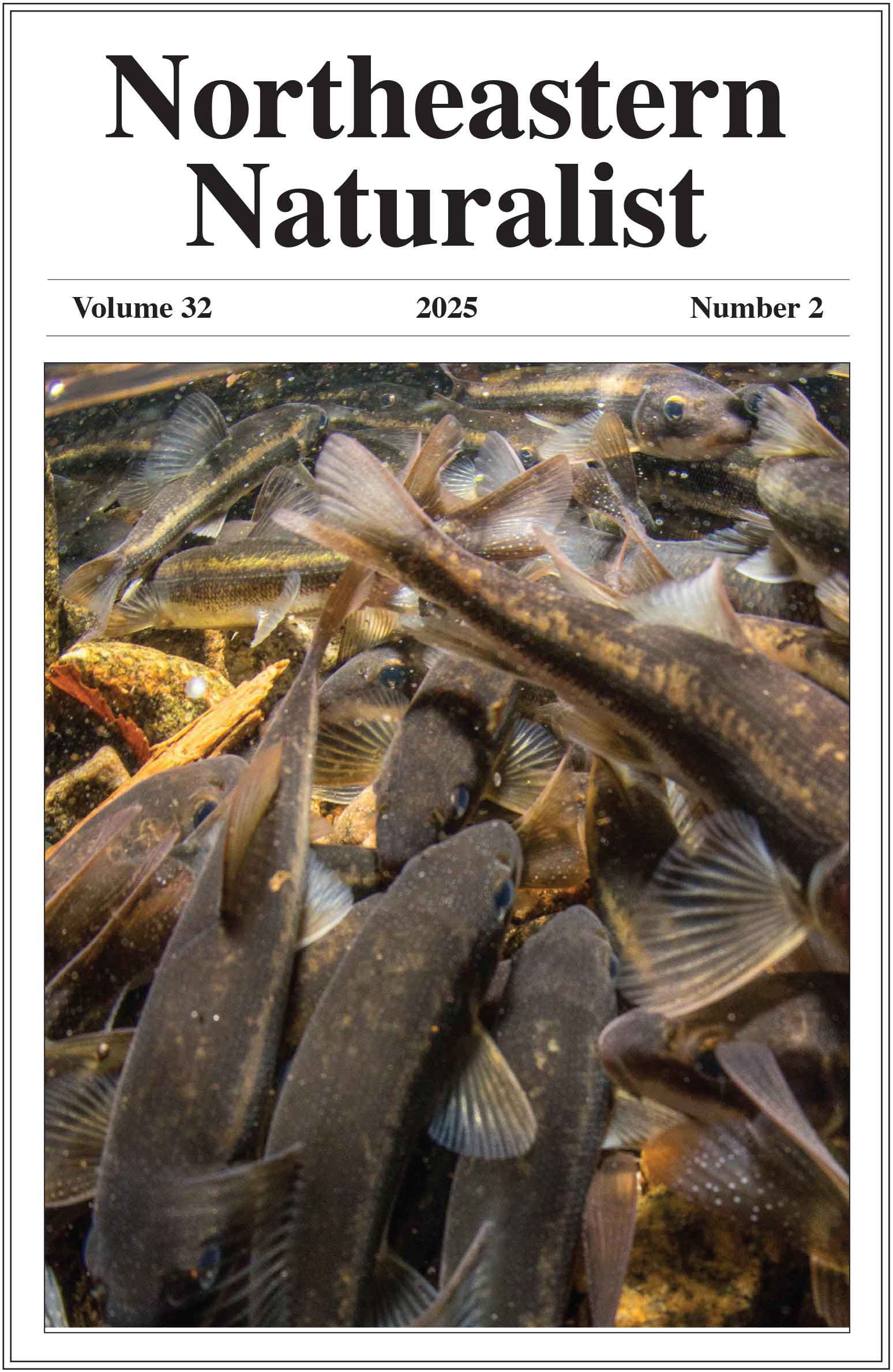Exploring Environmental Drivers of Growth for Tree Species Associated with a Rare Limestone Bluff Cedar–Pine Forest in Vermont
Paul G. Schaberg1,*, Paula F. Murakami2, Christopher F. Hansen3, and Rebecca L. Stern4
1Forest Service, US Department of Agriculture, Northern Research Station, Burlington, VT 05405. 2Forest Service, US Department of Agriculture, Northern Research Station, South Burlington, VT 05403. 3The University of Vermont, Rubenstein School of Environment and Natural Resources, South Burlington, VT 05405. 4Environmental Resources Management, Malvern, PA 19355. *Corresponding author.
Northeastern Naturalist, Volume 30, Issue 2 (2023): 244–268
Abstract
The limestone bluff cedar–pine forest is a rare upland natural community that is threatened by development and invasion by exotic species. Furthermore, the sensitivity of this forest-type to changes in climate and pollution exposure is unknown. We collected xylem increment cores from 4 conifer species (Thuja occidentalis [Northern White Cedar], Juniperus virginiana [Eastern Red Cedar], Pinus strobus [Eastern White Pine], and Tsuga canadensis [Eastern Hemlock]) and 4 hardwood species (Quercus rubrum [Northern Red Oak], Quercus alba [White Oak], Fagus grandifolia [American Beech], and Fraxinus americana [White Ash]) within and close to a cedar–pine forest along the eastern shore of Lake Champlain in Vermont and correlated radial tree growth to precipitation, snow, temperature, and pollution data to assess which factors influenced growth during the time period 1937–2016. We examined growth and possible environmental drivers of it for a variety of species to evaluate how unique these may be for the cedar and pine trees emblematic of the limestone-bluff community. For both conifers and hardwoods, precipitation exhibited the strongest positive correlations with growth and occurred with greater frequency compared to other climate and pollution parameters. Snow was positively associated and temperature was negatively associated with growth for all species. Despite growing over calcium-rich bedrock, and especially for the conifers, pollution seemed to limit growth in years prior to pollution reductions enacted following the 1990 Amendments to the Clean Air Act.
![]() Download Full-text pdf (Accessible only to subscribers. To subscribe click here.)
Download Full-text pdf (Accessible only to subscribers. To subscribe click here.)
Access Journal Content
Open access browsing of table of contents and abstract pages. Full text pdfs available for download for subscribers.
Issue-in-Progress: Vol. 32 (3) ... early view
Check out NENA's latest monograph and Special Issue:













 The Northeastern Naturalist is a peer-reviewed journal that covers all aspects of natural history within northeastern North America. We welcome research articles, summary review papers, and observational notes.
The Northeastern Naturalist is a peer-reviewed journal that covers all aspects of natural history within northeastern North America. We welcome research articles, summary review papers, and observational notes.